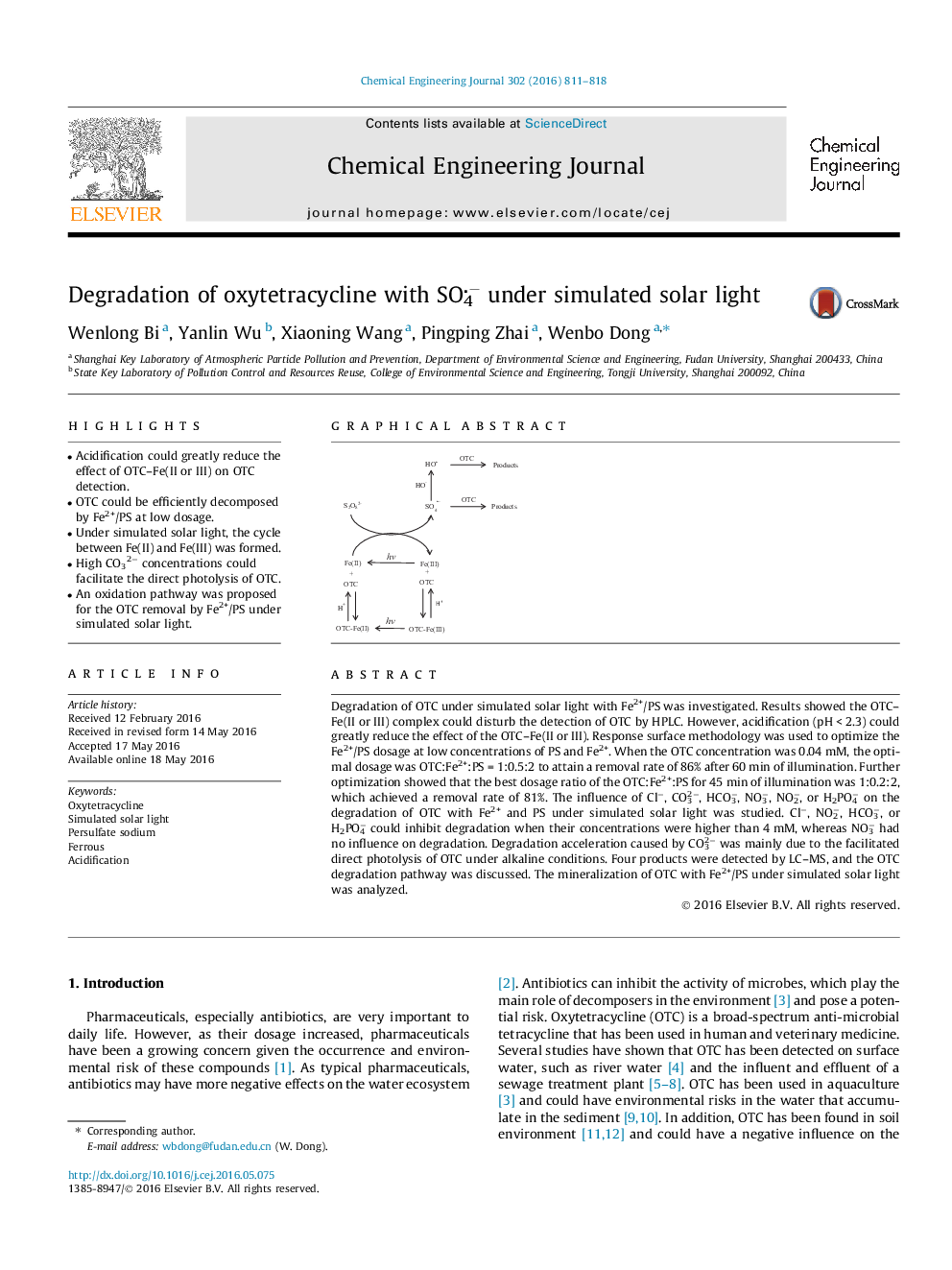| Article ID | Journal | Published Year | Pages | File Type |
|---|---|---|---|---|
| 145348 | Chemical Engineering Journal | 2016 | 8 Pages |
•Acidification could greatly reduce the effect of OTC–Fe(II or III) on OTC detection.•OTC could be efficiently decomposed by Fe2+/PS at low dosage.•Under simulated solar light, the cycle between Fe(II) and Fe(III) was formed.•High CO32− concentrations could facilitate the direct photolysis of OTC.•An oxidation pathway was proposed for the OTC removal by Fe2+/PS under simulated solar light.
Degradation of OTC under simulated solar light with Fe2+/PS was investigated. Results showed the OTC–Fe(II or III) complex could disturb the detection of OTC by HPLC. However, acidification (pH < 2.3) could greatly reduce the effect of the OTC–Fe(II or III). Response surface methodology was used to optimize the Fe2+/PS dosage at low concentrations of PS and Fe2+. When the OTC concentration was 0.04 mM, the optimal dosage was OTC:Fe2+:PS = 1:0.5:2 to attain a removal rate of 86% after 60 min of illumination. Further optimization showed that the best dosage ratio of the OTC:Fe2+:PS for 45 min of illumination was 1:0.2:2, which achieved a removal rate of 81%. The influence of Cl−, CO32−, HCO3−, NO3−, NO2−, or H2PO4− on the degradation of OTC with Fe2+ and PS under simulated solar light was studied. Cl−, NO2−, HCO3−, or H2PO4− could inhibit degradation when their concentrations were higher than 4 mM, whereas NO3− had no influence on degradation. Degradation acceleration caused by CO32− was mainly due to the facilitated direct photolysis of OTC under alkaline conditions. Four products were detected by LC–MS, and the OTC degradation pathway was discussed. The mineralization of OTC with Fe2+/PS under simulated solar light was analyzed.
Graphical abstractFigure optionsDownload full-size imageDownload as PowerPoint slide
